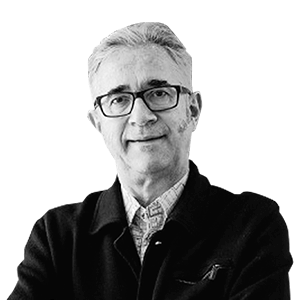Walden 7 and the housing crisis


Fifty years ago, when the dictator died, Walden 7 (1970-1975) was completed in Sant Just Desvern. A project by the multidisciplinary Taller de Arquitectura, directed by Ricardo Bofill, it initially comprised 445 apartments with communal spaces, forming a kind of mega-structured city in space. The complex was made up of 30-square-meter modules that could be combined and transformed. It was the tip of the iceberg of cultural and artistic movements; one of the fruits of May '68, planned and managed in the final years of the Franco regime with an eye toward the transition to a democratic society.
At that time, Esteve Bonell's Frégoli building (1972-1975) was also being completed; Studio PER had already built the Casa Fullà (1966-1971); and Francesc Rius was finding a way...high techfor Catalan domestic architecture with the houses on Coll del Portell Avenue (1971-1976), all works in Barcelona. It was a great moment of experimentation with housing architecture.
In the field of theory and criticism, the journal Bis Architectures (1974-1985), directed by Rosa Regàs. It was the era of the Gauche Divine, captured in Colita's photographs (these days, with the exhibition Antifeminist at the Disseny Hub), and the avant-garde exhibitions at the Vinçon gallery (1973-2015). These were the beginnings of the counterculture and the new wave of feminist movements, while art and literature flourished in Catalonia.
The structural framework of Walden 7 was theorized and created by Anna Bofill Levy, a member of the Architecture Workshop between 1963 and 1980, now thankfully recognized for her contributions as an architect and composer. The starting point was a rebellion against the prevailing rationalist urban planning and static conceptions of form, incapable of adapting to evolution. Walden 7 was a systematic dream, a concrete utopia of life in freedom. However, it was more of a culmination, the endpoint, than the beginning of a new movement. Ricardo Bofill opted for a postmodern, monumental, and commercial work. And today, large housing complexes that are not part of the urban fabric and lack the same scale and scope as the existing city no longer make sense.
But is experimentation still happening in Catalan domestic architecture 50 years later, just as it did then? Undoubtedly, yes, although rigid regulations, excessive bureaucracy, and a still largely unprofessional construction and real estate sector make it difficult.
Today we can say that there are innovative elements in Walden 7's research that have continued, such as the lightweight mesh structures in some of Josep Miàs's projects. Likewise, in terms of weaving organic, sensual, and chromatic creations, reveling in the eroticism and warmth of architecture, we find similarities in the work of EMBT, which follows the legacy of Enric Miralles and has been evolving for 25 years with Benedetta Tagliabue and her team.
Regarding the desire to transform spaces for alternative ways of living and relating, we find the Walden 7 model updated in housing cooperatives with usufruct rights, a new generation that began ten years ago in Barcelona and is spreading throughout Catalonia. It has been demonstrated that one of the solutions to the housing access problem, in addition to the need for significantly more public rental housing, is to break free from the speculative laws of the market, as cooperatives like La Borda, La Balma, La Morada, and Walden XXI are consolidating, aiming for a communal, self-managed, and ecological way of life, with daily management.
This is also reflected in the housing projects of Impsol (Metropolitan Institute for Land Promotion and Heritage Management), which demonstrate remarkable innovation in buildings such as the Matrix in Cornellà, designed by Marta Peris and José Toral, or the 30 homes in Sant Just Desvern, designed by Dataae and Xavier Vendrell. This approach was also promoted between 2015 and 2023, both in Barcelona with Imhab (Municipal Institute of Housing and Rehabilitation) and in the Balearic Islands with lbavi (Balearic Housing Institute), using innovative criteria, focusing on sustainable materials, functional flexibility, and fostering community living.
If the qualities of these public housing units and cooperatives are aligned with the large amount of affordable housing needed by the population of Catalonia, we could say that the utopian vision of Walden 7 would have spread throughout our territory. We hope to see it happen, and that it doesn't take 50 years.
